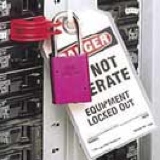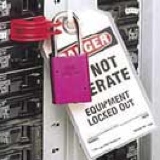Information
-
Document No.
-
Audit Title
-
Client / Site
-
Conducted on
-
Prepared by
-
Location
-
Personnel
-
Action Items for this inspection
-
Enter Lab, Department or Building I.D./s for this inspection
PPE
-
Items observed were
-
Approved safety glasses are available and in use by employees.
-
When the is a splash spray mist or flying particle hazards safety goggles and face shields are available and in use by employees.
-
Protective gloves that are approved for the hazards handled are available and in use by the employees.
-
Respirator use conforms to this facilities Respiratory Protection Program. Respirators are being worn properly.
-
Lab coats, "Tvek" garments and aprons where applicable etc. are available and in use
Chemical storage and handling safety
-
Items observed were
-
CHEMICALS are stored safely on bench tops and testing equipment to reduce the risk of spill or leaks?
-
CHEMICALS-segregated by hazard class and stored separately (flammables, acids, corrosives)
-
CHEMICAL-secondary containers in good condition, closed when not in use and labeled clearly with HMIS or GHS compliant labeling.
-
Flammable chemical storage does not exceed max allowable Qtys (10 GA-on bench tops,25 GA- in approved safety cans,60 GA-in safety cabinets)
-
CHEMICAL-spill kit supplies available and well stocked and appropriate for the amount and type of chemicals in the lab?
-
Employee are carrying glass chemical containers safely in shatter proof protective sleeves.
-
Approved self closing Safety cans used to store and dispense flammable liquids are properly labeled
-
Gas cylinders properly secured, safety caps in place.
-
Food and beverages are not stored in laboratory area, refrigerators, or in glassware that is also used for laboratory operations.
-
Mobile phase bottles in spill containment labeled correctly with HMIS/ GHS labels
-
Unnecessary, unused, or outdated chemicals are removed from laboratories and chemical storage areas
-
No materials or chemicals are stored on top of flammable cabinets
-
Hazardous chemical containers are stored below eye level.
-
Hazardous waste containers properly labeled,closed & 55 Gal maximum total stored in lab.
Emergency preparedness
-
Items observed were
-
Emergency exit signs posted and clearly indicate direction of evacuation
-
Illuminated exit signs and emergency lighting tested and working properly
-
Food and beverages are not stored in the laboratory areas, refrigerators or in glassware that is also used for laboratory operations
-
Exits, emergency equipment, electrical panels & aisles clear of obstruction. No excess clutter present.
Emergency equipment
-
Items observed were
-
Appropriate fire extinguisher available within 30 feet and inspected monthly and changed out within the past 12 months (see tag).
-
Eyewash stations and safety showers and eye washes provided within the work area for immediate use (within 50 feet or 10 seconds of exposure) and access is unobstructed.
-
First aid kits are well stocked and items are not out of date?
Biohazard safety
-
Items observed were
-
Biohazard Laboratory surfaces are cleaned; disinfected or decontaminated after work is performed.
-
Biological waste is appropriately marked with a biohazard symbol
Housekeeping
-
Items observed were
-
Broken glass containers are available and in use
-
Heavy objects are confined to lower shelves
-
Electrical cords are in good condition and are UL listed
-
Laboratory storage areas are uncluttered, orderly and shelves over six feet are secured to prevent tipping.
-
Dirty lab coats are stored in a covered container until removed for laundering and are cleaned regularly.
-
Bench tops and under counters are clean, organized and workspaces maintained to eliminate harmful exposures or unsafe conditions or potential spills.
-
Exits, emergency equip & aisles clear of obstruction. No excess clutter present. 36" clear path.
-
Electrical switch panels unobstructed by at least a 36 inch clearance.
Laboratory Fume Hoods
-
Items observed were
-
Fume hoods are working properly, annually tested for proper CFM and certification sticker attached
-
Fume Hoods are not being used for excess storage
-
Performance tested within the last year (check sticker on front or side of unit) or if the hood is not in use it is labeled as such. Min 100 CFM
-
Storage within the hood minimized and containers kept closed. Containers are at least 6 inch inside hood from sash.
-
Storage within the hood minimized and containers kept closed. Containers are at least 6 inch inside hood from sash.
Written plans procedures and postings
-
Items observed were
-
Chemical Hygiene Plan and emergency action plan
-
MSDS or SDS sheets are available, current and accessible to all employees
-
Emergency information and contact list posted?
-
Evacuation maps posted and up to date
-
Biohazard symbols are posted on access doors to biohazard laboratories
-
Chemical Hazard warning signs posted on entrance to lab and hazard ratings (1-4) are correct
-
Reviewed By: (Signature)
-
Date and time reviewed








